|
Like many of us, one of the prayers I learned growing up was the prayer to St. Anthony – “St. Anthony, St. Anthony, please come around. Something is lost and must be found.” I put St. Anthony on the back shelf through my teenage years and into adulthood, but as I aged, I realized more and more that I need help and guidance to live a good and faithful life. One day, while I was traveling, I left an expensive set of headphones on a plane. I did not realize it until later in the day when I was checking my briefcase in preparation for a meeting. It would be days before I could return to the airport. I trusted those earphones into St. Anthony’s capable hands. Three days later, I arrived late to the airport, went to my gate, remembered my prayer to St. Anthony, had time to go to the lost and found, and there were my headphones. Since then, I have relied on St. Anthony numerous times to find my phone, keys, or that elusive book. I must confess, I am a bit shy sharing my emerging devotion to St. Anthony. It borders on superstition, no? Superstition is when I believe that what I do – say a prayer – causes St. Anthony to act. The saints contemplate God, praise him, and “constantly care for those whom they have left on earth.” (CCC 2683) Evoking St. Anthony does not change God. It changes me. The more I learn about St. Anthony (1195-1231), the more I want to know. He was born into wealth and privilege, joined the Augustinians at a young age and, at 19, was ordained and served as the guest master. That is how he met the Franciscans. He was drawn to their life of mission to the poor. He immersed himself in scripture and, just by happenstance, was discovered to be a remarkable preacher. Eventually, St. Francis (1181-1226) himself entrusted the formation of the Franciscans in theological studies to Anthony – balancing the rigors of the academy with the simplicity of the Franciscan life. After the general chapter in 1226, he was made Provincial Superior of northern Italy and settled in the city of Padua. In 1228 he served as the Franciscan envoy to Pope Gregory IX. His preaching was so amazing, he was commissioned to produce a collection of his homilies. There are many miracles attributed to St. Anthony. There are two that I find particularly compelling. Anthony had a book of psalms that was very important to him. He wrote notes in it to help him instruct his students. A novice, who decided to leave the order, took it. St. Anthony prayed for its return. Not only did the thief return the book, but he also returned to the community. The Eucharistic miracle attributed to St. Anthony occurred when he was challenged by a heretic about the real presence of Christ in the Eucharist. The heretic brought a hungry mule and showed him fresh fodder. St. Anthony brought a monstrance with the Blessed Sacrament. The mule ignored the fodder and bowed before the Blessed Sacrament. St. Anthony became ill with ergotism, a disease caused by a fungus found in rye and other cereals. He went to a woodland retreat to recover and died on his way back to Padua on June 13, 1231. More and more I am asking St. Anthony to “come around” to guide me in my own ministry within the church, my family life, and my daily life in these uncertain times. My prayer is that we will take the time to “come around” to St. Anthony and learn from this remarkable saint. He can guide us in rooting our lives in the scripture, cultivating a deep love for the Eucharist, and living a life spent in service to others. I will still ask St. Anthony to help me find my headphones – but I will also ask him to help me “hear” the word of God and act on it. **This photo is from: https://aleteia.org/2019/12/21/why-is-st-anthony-of-padua-depicted-holding-the-child-jesus**
0 Comments
Have you ever considered what it would have been like to be a member of the Church in the first few centuries? Jesus would have been fresh in peoples’ memories, but the rich Christian tradition we have today would have only just been taking shape. Those early followers of Christ would have been interpreting what Jesus’ teachings meant and figuring out how to live them out in their daily lives, both individually and communally. It was in this context that St. Justin Martyr, an early Christian convert and apologist who lived in modern day Israel from about 100-165 AD, lived. St. Justin is well known for his First Apology, which he wrote to the Roman emperor, Antoninus Titus, as a defense and explanation of Christianity. This text not only gives us insight to what it was like when the Church was taking shape, but it also provides a rich insight into how we can live as Christians to this day.
1) Being Christians in name and deed St. Justin knew as well as anyone today that it is much easier to say you are a Christian than it is to truly live as one. He wanted the emperor to truly understand what Christianity was and Who it was founded upon, to not base his opinions on the popular zeitgeist: “For from a name neither praise nor punishment could reasonably spring, unless something excellent or base in action be proved.” (Ch. IV) For us today, we live in a world where the name “Christian” can carry so many different connotations. It depends on each of us to “prove something excellent” in our actions. Besides claiming the name Christian, are we living and worshiping in a way that reflects this privileged name? 2) How to live as Christians Whether Christians in the first century or in the 21st century, we are called to live for God and His eternal kingdom above all else. With his eyes focused on Heaven, St. Justin was able to accept persecutions because he understood that his earthly life was temporary. He encouraged others to “imitate the excellences which reside in [God], temperance, and justice, and philanthropy.” (Ch. X) Rather than the material offerings sacrificed at the time, St. Justin wanted to make an offering of his life by setting aside his own will and taking up God’s ways. Rather than imitating the pagan gods, he wanted to become deified by “living near to God in holiness and virtue.” (Ch. XXIII) While our settings may be different today, we can still practice the patience, love, and charity towards others that St. Justin encouraged. 3) Christian Community Throughout the Apology, St. Justin is not just preaching about individual Christians, but the whole Christian community. From the beginning, the necessity of community was always understood. It was through one another that they would receive the faith, be converted, and persevere in the faith. Rather than worship alone, the early Christians understood the need to come together. The faithful would gather to offer prayers for one another to be “found good citizens and keepers of the commandments.” (Ch LXV) They would celebrate the Eucharist in remembrance of Christ’s passion and for their own nourishment. They would collect money to be distributed for the needs among them. Rather than seeing this early form of the Mass as a Sunday obligation, it was the fitting response to their new life in Christ. We too can embrace this view of community as the place we offer God fitting worship and truly practice our faith. While today most of us are blessed to not fear extreme persecution or martyrdom, we do still have the freedom and responsibility to make the choice for God and the good daily. Through the intercession of St. Justin, may we be strengthened to boldly profess and live out our faith. **This image is from: https://www.wordonfire.org/articles/contributors/st-justin-martyr-on-the-eucharist-and-the-ancient-mass/ Courage and perseverance are two traits that I admire. The latter is a characteristic that not many people have, is hard to teach, and one that is imperative for success. In my classroom of 2nd graders, I try to remind them to “not give up, but try again and again.” When they become frustrated with challenging work or difficult friendships, they stop wanting to try again. They start to give up - but I tell them, “Keep trying!” and “Don’t be afraid to make a mistake!” Hopefully, one day my students will grow to recognize how courage can help them persevere through anything.
People who do extraordinary things should be recognized for their courage and conviction. Saint Catherine of Siena, whose feast day we celebrated yesterday, is a woman whose contributions to the Church, taking action in times of need and exceptional theological writings, sometimes can be overlooked. Born in Siena, Italy in 1347, Catherine spent her life doing the will of God. She began receiving visions and praying to God from a very early age, even seeing in one in which Christ reassured her with an armor of courage that could overcome anything that tempted or threatened her. St. Catherine lived her entire life in prayer and was named a Doctor of the Church by Pope Paul VI on October 4, 1970. She along with St. Teresa of Avila and St. Therese of Lisieux are the three women to have been bestowed with such a title. St. Catherine worked to return Pope Gregory XI to Rome, from Avignon France where the Papacy had been residing for 67 years. Her determination to see this mission through was a testament to her unwavering courage to do God’s will. In her many philosophical letters, prayers, and the Dialogue, St. Catherine reflected on four theological concepts with which she considered while in ecclesiastical mysticism. The first was a Treatise of Divine Providence, the second was a Treatise of Discretion, third was a Treatise of Prayer, and finally a Treatise of Obedience. Throughout her courageous writings, she discusses the goodness of a person’s knowledge of God and his unending love for his children living on earth. Because of this prayerful life she led, in 1375, St. Catherine was blessed with the Stigmata on her hands, feet, and side. Her wounds reflected those of Christ’s and were only visible to the naked eye upon her death in 1380 at the young age of thirty-three. Found incorrupt in 1430, St. Catherine is now buried under the altar of Santa Maria Sopra Minerva, in Rome and a sculpture of her body is on display there, too. Throughout the year, let us strive to be like St. Catherine of Siena and take courage and persevere. Unshaken by those who challenged and doubted her, she remained steadfast in her commitment to Christ, His Church, and His people. You don’t have to be a saint to follow God’s call to courageous witness, but prayer and perseverance can lead you toward holiness in Christ. **This blog was originally published on April 30, 2015.** **This photo is from: https://ourcatholicradio.org/blog/5-things-you-can-learn-st-catherine-siena** Receptivity to others is an important part of the work of evangelization. When we think about those in faith who we can look to for guidance in receptivity, we often go to Mary, and rightly so. While Our Blessed Mother is the perfect model of receptivity through her being the one who received the Incarnation, it is in examining the life of an unlikely 19th century saint that we see how we can live out Mary’s model of receptivity in a modern, secular world in order to bring others to encounter with Christ. St. John Bosco was an Italian priest who lived in the 19th century, and is known for the work he did with troubled youth in the city of Turin where he was assigned as a parish priest. During his time, it was often frowned upon for priests to educate, accompany, house, and provide for the poor youth in the ways that St. John Bosco did, but this did not stop him from his work. Through his lifetime St. John Bosco helped so many young boys in difficult situations to encounter Christ and become faithful Christians that other priests in Turin accused him of bribing the boys and “stealing” them from the other parishes. But it was not St. John Bosco’s money or ulterior motives that brought these boys to the Church, it was his ability to receive and love them fully where they were. When he met boys living on the streets, he did not immediately try to get them into the church for Mass, but rather grew to know and love them as children of the Father, becoming a trusted friend who could share the love of Jesus Christ with them. When he visited the boys in prison, he did not condemn or accuse them, but would listen lovingly to whatever they had to say, simply being with them so that they would not feel forgotten or unloved. St. John Bosco understood that the point of his evangelization was not to get as many people in pews as possible, but to bring as many people as possible to know their Savior– and to do that, a person must first know that they have an identity, a community, and a purpose. When St. John Bosco received the boys he ministered to at whatever level of faith or morality they were at, he let them know, often without words, that they had the identity of being sons of the Father, had community in Holy Mother Church, and had a purpose of getting to eternal life in the Holy Trinity. We learn from St. John Bosco how crucial of a step receiving the other is when evangelizing. It can be tempting to jump straight into a script or already be thinking about ways to invite the person you’re encountering into the faith before you’ve even started talking to them. However, the example of St. John Bosco challenges us to instead receive the person first: to listen to them, get to know them, and love them fully where they are. It is only from this place of trust in receptivity, that we can truly say to the other: “I love you, but there’s someone who loves you infinitely more, and I want to introduce you to Him.” **This photo is from https://catholiclife.diolc.org/2019/07/25/st-john-bosco-a-role-model-of-accompaniment/**
Pope Francis eloquently writes in his post-synodal exhortation Christus Vivit, “After this brief look at the word of God, we cannot just say that young people are the future of our world. They are its present.” In the last decade, and especially since Christus Vivit was promulgated in 2019, the Church has sought to help the Church’s youth become protagonists in their own right. This is seen in many parish, diocesan, and archdiocesan initiatives to form young Church leaders. Some examples of this include creating new diocesan offices for youth and young adult ministries and the growth of many high school and collegiate campus ministry offices. Nevertheless, young people crave young role models for the Faith. Pope Francis recognized this and listed many examples, including Mary, St. Francis of Assisi, and St. Joan of Arc. In this blog, I wish to discuss three saints in particular--Bl. Carlo Acutis, St. Jose Sanchez del Rio, and St. Therese of Lisieux—and how their witnesses are a model for young people (especially youth leaders) who wish to dive deeper into a relationship with Christ and his Church. Young people everywhere crave to see an aspect of themselves in the people they look up to, and Bl. Carlo Acutis is a soon-to-be saint who allows young people to see commonalities between themselves and the saints. Carlo was a typical Italian teenager who played soccer and video games. Nevertheless, he also made great strides for God in his work, uploading Eucharistic miracles to a website to spread devotion to the Body and Blood of Christ. He was called “an influencer for God” by his mother in an America Magazine article. Bl. Carlo stands as a soon-to-be saint accessible to the Church’s youth because of his young age and his connectedness to 21st-century culture. Bl. Carlo Acutis models for youth leaders how evangelization must occur within the culture and modern media, not from an ivory tower of formal theology and scholarship. The Gospel must be spread in a way that all generations can appreciate, and Bl. Carlo accomplished that with the creation of his website. Another young person who bore witness to the Faith in the context of his own time was St. José Sánchez del Rio. Saint José was a young man growing up in Mexico during the Cristero Wars. The Cristero Wars were a series of conflicts between the Mexican President Plutarco Calles's secularist government and Cristero fighters (formally known as the National League for the Defense of Religious Liberty). The Calles government imposed the 1917 Mexican Constitution, which contained anticlerical policies and sought state atheism. Catholics across the country opposed this and began resisting through liturgical services and military resistance against the Mexican army. Saint José was a young man during the war and wanted to fight to defend his Faith. His mother, however, refused to let him formally join the Cristero Movement. This made St. José contribute to the movement indirectly and attend Mass whenever possible. Nevertheless, when a Cristero General lost his horse in battle, young José offered his, and this led to his imprisonment by the Mexican army. After being tortured to renounce his Faith, José refused and was martyred. St. José Sánchez del Rio’s witness to the Faith is one of the best examples of what a Catholic is called to do by Christ: witness the Faith within your own culture and times while not renouncing our Lord. Despite his young age, St. José believed in Christ’s love and graces, and that gave him the strength to be countercultural and stand with Jesus instead of with the popular culture and the government that stood against Him. Finally, St. Thérèse of Lisieux remains one of the most commanding forces in the Church’s lexicon for youth witnesses. Becoming a Carmelite at age fifteen, Thérèse began to pray incessantly and pioneered her famous “Little Way” for the spiritual life. St. Thérèse’s “Little Way” seeks to help people encounter Christ in their day-to-day activities and pray to Jesus with childlike dependency. St. Thérèse of Lisieux’s powerful devotion to the Eucharist, prayer, and a joyful attitude allow many to realize that one can be close to Christ no matter what they are doing. St. Thérèse stands as a strong role model for young Catholics since her relationship to Christ reached such profound depths at her young age. Young people crave role models in the Church, and older generations can find powerful witnesses and wisdom from young Catholics as well. The Church has been and must remain dedicated to telling and promoting the stories of young saints to inspire every generation to become protagonists in the Church and saints for Christ’s kingdom. Young people can be inspired by these saints since they can “…offer the Church the beauty of youth by renewing her ability to ‘rejoice with new beginnings, to give unreservedly of herself, to be renewed and to set out for ever greater accomplishments’” (Pope Francis, Christus Vivit). **This blog was originally published on August 5, 2021.**
I recently started a podcast called “You Are More,” that focuses on living life outside the box yet inside the bounds of God’s perfect plan. As a therapist, I want people to know they are not defined by any box or label in their life. This idea originated after I wrote a book about each person being more than their relationship status. God defines us; labels just help describe us. One of my podcast guests posited that the saints are more than saints. Though we know saints by the parishes, organizations, and cities that honor them, or by reading their names in Scripture, they are humans at their core. The Chosen is a TV series that exhibits the humanity of Jesus and His disciples beautifully. After watching the first three seasons of The Chosen, characters pop off the page when I read or hear passages from the Bible. This week, we celebrate two apostles who share a feast day: St. Simon (the Zealot or the Canaanite) and St. Jude (also known as Thaddeus). Both men are lesser known than Peter, James, or John. And yet, they are close followers of our Lord. I can picture their personalities and their journeys. In the show, they are known as “Z” and Thaddeus. Franciscan Media explains that for Zealots, “the messianic promise of the Old Testament meant that the Jews were to be a free and independent nation. God alone was their king, and any payment of taxes to the Romans – the very domination of the Romans – was a blasphemy against God.” Loyola Press adds that, “some Zealots were very concerned that the spiritual ideals of their religion be kept. But others acted more like modern-day terrorists by raiding, killing, and inciting riots.” Linked below is a depiction of Simon Z being called to follow Jesus that shows he felt defined by his zealot training and weapons. Jesus told him that He does not need Simon, but he wants him… not for his weapons, but for him. https://www.youtube.com/watch?v=4JgOKkGBIQs&t=182s In this dinner conversation at the Wedding at Cana, Thaddeus shares with the disciples how he met Jesus working by his side at a construction site. Linked below: https://www.youtube.com/watch?v=xWciL5R5XtY The disciples were friends with Jesus and with one another. They lived in community and had their likes and dislikes, their strengths and weaknesses. The reason the Church shares the stories of the saints is not to show us unattainable ideals, but to remind us of what is possible for each of us. We can find our story in their stories and be encouraged that they were able to hold onto hope, faith, and love throughout life’s ups and downs. You may be a passionate person who is willing to take risks in the name of peace and justice like Simon Z. You may be meeker and inclined to accompany others, so they feel seen and heard like Thaddeus. You may even connect with another disciple better than either of these men, but that is a beautiful reminder that you are unique and have your own gifts. If you are not authentically you, you cannot be a saint. Jesus made you to be who you are, not someone else. Simon and Thaddeus may be lesser known in the story compared to the bigger names, yet, they are wanted by Christ. Jesus wants you to follow Him just as you are. Some of us have lost hope in our lives, and as a therapist I like to offer to hold the hope for my clients until they are ready to pick it back up again. In the Church, we know Thaddeus as St. Jude, the patron of hopeless causes. His name was originally Judas Thaddeus, which was eerily like the name Judas Iscariot, the one who betrayed Jesus. Because of this similarity, people were afraid to pray to him until St. Bridget had a vision of Our Lord asking her to confidently pray for his intercession. He became known as Jude to differentiate him from the infamous Judas. Now, countless miracles are attributed to his intercession. Simon and Jude both show different sides of Our Lord. Our Lord can be determined, feisty, and aggressive while also being slow, quiet, and gentle. Both exhibit hope. Article 1817 of the Catechism of the Catholic Church describes hope as “the theological virtue by which we desire the kingdom of heaven and eternal life as our happiness, placing our trust in Christ's promises and relying not on our own strength, but on the help of the grace of the Holy Spirit.” How are you desiring the kingdom of heaven? How can you place a greater trust in Christ’s promises this week? How can you rely less on your own strength and more on the grace of the Holy Spirit? Sts. Simon and Jude, pray for us! **This photo is from The Chosen television series.**
In my adult years, I have often turned to St. Teresa of Avila as a spiritual mother. I love her courage, her passion, her wit, and her boldness. Throughout her life, she was always on the go. She was a reformer who brought the Carmelite Order back to its original roots. She got things done, founding over fifteen monasteries. And yet she was a great mystic--a woman who received beautiful graces, revelations and experiences of God in profound ways that are hard to tangibly explain. She went into ecstasies as a result of her deep relationship with the Lord and wrote a book called The Interior Castle about the journey of faith leading to union with God. I love the synthesis of the practical and the mystical in her personality. This synthesis becomes more compelling in our lives today, for it reveals that we are capable of a deep interior life and relationship with God in the midst of the busyness of life. There is a story about Teresa of Avila that has caused me to laugh in genuine appreciation of her character. According to tradition, Teresa fell off her donkey while journeying to visit one of her convents--causing her to land in the mud and dirty her Carmelite habit. With her quick, fiery Spanish temper, Teresa looked up to heaven and said to God, “If this is how you treat your friends, no wonder you don’t have many.” I love this story because it beautifully depicts St. Teresa’s humanity and honest relationship with God. It is a raw, unfiltered moment of frankness that I believe is an example of both true prayer and transparency in our relationship with God. If prayer is ongoing dialogue with God through words, thoughts or actions, what is Teresa’s statement if not prayer? She talks to God with confidence and trust. She is bold about her feelings, knowing that God can handle her honesty. Notably, where does Teresa turn first in her day to day life? To God. He is her crutch, her foundation, even in times of frustration and annoyance. He is at the forefront of her mind. When I first heard this anecdote, I could completely relate to St. Teresa. Like her, I fall down on the road towards holiness. Furthermore, I often catch myself blaming God for different moments of hardship and frustration. What we sometimes miss as we lie there in the mud is the hand that’s in front of us--the extended hand of Christ that I often imagine in the story of the woman caught in adultery who Jesus saves from being stoned. God is not the one who pushes us down, but he is the one who picks us up. How quick are we to reach for the outstretched hand? Do we even reach out for it? Or are we too proud, choosing to try to get up by ourselves? What did St. Teresa do? In one of her reflections, she writes, “I praise the mercy of God, for it was he alone who gave me his hand.” (Life, Ch 7, The Collected Works of St. Teresa of Avila, Volume One, ICS Publications, Washington D.C. 1987) Do we turn immediately to God in our day to day lives? This is a question we can all reflect upon. Taking our reflection a step further, do we respond to the situations in which we find ourselves with joy or a sense of humor? I believe Pope Francis and St. Teresa would have been great friends. In his homily at the canonization Mass of Junipero Serra, Pope Francis reminded us of St. Paul’s command to “rejoice always.” If we forget this call, we fall into the temptation of becoming “sourpusses”--to use Pope Francis’ term. We are called to be people of joy in the midst of suffering, not in the absence of it. It is this type of transparency in our relationship with God, this type of outlook on the life of faith, this sense of humor that helps us move forward in answering the universal call to be missionary disciples who witness to the Gospel through their encounter with those around them. Like St. Teresa, may we always have a sense of humor. May we be bold and honest in our dialogue with God. May we be apostles of joy. And may we join in saying the phrase very often attributed to her, “God protect us from sour-faced saints”! **This blog was originally published on October 15, 2015.** **This image is from: https://www.holyart.co.uk/blog/religious-items/saint-teresa-of-avila-spanish-nun-and-mystic/**
“Because children have abounding vitality, because they are in spirit fierce and free, therefore they want things repeated and unchanged. They always say, "Do it again"; and the grown-up person does it again until he is nearly dead. For grown-up people are not strong enough to exult in monotony. But perhaps God is strong enough to exult in monotony. It is possible that God says every morning, "Do it again" to the sun; and every evening, "Do it again" to the moon. It may not be automatic necessity that makes all daisies alike; it may be that God makes every daisy separately, but has never got tired of making them. It may be that He has the eternal appetite of infancy; for we have sinned and grown old, and our Father is younger than we.” G.K. Chesterton, Orthodoxy Today on the feast day of St. Therese of Lisieux, affectionately known as the Little Flower, I turn to my sons’ example in accepting everything completely from God. My almost two-year-old is predictable: he loves blueberries, watching the garbage truck pick up trash on Mondays and Fridays, and playing in the backyard. Recently he has taken to playing with a giant cardboard box that my husband engineered into a “cottage” with a window and a workable door. The joy and excitement he exudes each morning playing with his cardboard cottage didn’t strike me at first. But after a few rounds of him serving me imaginary chocolate milk and tea from his little abode, I realized that this joy, the same joy and freedom he has when running ferociously to the front of the house to see the garbage being picked up, is the joy and freedom St. Therese of Lisieux wrote about and emulated in her life. “To remain a child before God means to recognize our nothingness, to expect everything from God. It is not to become discouraged over our failings, for our children fall often, but they themselves are too little to hurt themselves very much.” St. Therese of Lisieux Therese gives us the example of radical abandonment to the Father’s will. When we take a snapshot of her life—where she lived most of her life, whom she met, what accolades she was awarded—we see that her life was not much in worldly standards. And yet, Therese is honored with the title “Doctor of the Church.” Her writings and her example of charity beckon us to take a closer look at this simple and great saint. While Saint Therese is a heavily pestered saint when it comes to intercession (as her intercession is known to be great) and her quotes are seen often, today let us take after her childlikeness and see the world through her eyes with childlike abandonment to God. I encourage you to find five beautiful things in the mundane of your day that your eye has not yet “truly” seen before. Thank and praise God for the life He has given you, in all its sufferings and joys, and ask for St. Therese’s intercession in seeing the beauty in the mundane. For more resources on Marriage and Family, please click here. **This blog was originally published on October 1, 2020.** A few Sundays ago, our parish priest mentioned a phrase in his homily that stuck with me for several days. He said, “The most important person in the world is the one who is in front of you right now.” I think this is a phrase St. Vincent de Paul would live by if he were among us today. St. Vincent de Paul is well known for his service to the lowliest members of society. He was a French Catholic priest who dedicated his priestly career to the community outreach and evangelization of the poor by founding the Congregation of the Mission. Through his example, St. Vincent de Paul teaches us to see Christ in the poor and suffering, helping us to live out Jesus’ calling, “Whatever you did for one of these least brothers of mine, you did for me” (Matthew 25:40). St. Vincent de Paul said, “The poor have much to teach you. You have much to learn from them.” As we speak and listen to the poor, we come to know God better and are humbled by the circumstances of others. By extending a helpful hand or lending an ear to the less fortunate, we show God’s love and acceptance of all. There are many ways we can demonstrate this love and acceptance. Consider one of the following:
This last point is an important one. Although we may not encounter the financially poor every day, we do face people daily who may be poor in their spirituality, relationships, knowledge, and other ways. By making an effort to lend a listening ear or helping hand to coworkers, friends, family, people in the grocery store, those walking to work or traveling on the subway in addition to the homeless begging on the streets, we can help to achieve the work of God on earth a little bit day by day. I recently came across a picture quote that read, “It’s worth the trouble to become the person you were meant to be.” I was instantly reminded that God has an individual plan for me, just as he does for everyone else. God utilizes us to do his good work in our communities, striving to serve both those who lack financial resources or are poor or dejected in spirit. St. Vincent de Paul said to his priests, “Do the good that presents itself to be done…God lets us know he wants of us. We belong to him and not to ourselves. If he increases our work, he adds to our strength.” We must be open to the good work God wants to accomplish through us. To do this, we must continue our daily prayer, pay attention to opportunities where God is calling us to serve, and keep an optimistic heart. St. Vincent de Paul, pray for us! **This blog was originally published on October 6, 2016.** **This image is from: http://vincentians.com/en/vincent-paul-and-creative-love/** The past two months we have gotten to celebrate the feast days of many incredibly saints who can be role models for us throughout all the ups and downs of life. This September is no different. As we transition out of summer and enter into new routines in the midst of the continuing pandemic, we can turn to many of the saints this month who are known for their healing and ability to help others grow in their faith. Saints Known for Physical Healing Earlier this month on September 1st, we celebrated the feast of St. Giles. I had never heard of St. Giles until I read a blog post, from the early days of the coronavirus pandemic, about the 14 Holy Helpers. But the more I got to learn about St. Giles, the more his life inspired my own personal faith journey. Even though an injury crippled one of his legs, St. Giles was known for his miracle-working abilities for those who came to him. His mission as a miracle-worker was always centered on others, not himself. A similar selflessness was seen by two martyrs in the early Church, Sts. Cosmas and Damian, whose feast we will celebrate on September 26th. They both were doctors and did not accept payment for any of their services, recognizing the humanity in each person. They utilized their God-given skills to help anyone in need, which led them to become recognized as the patron saints of physicians. All three of these saints remind me that while this world is not our final destination, taking care of our earthly bodies remains very important. In whatever way we may need physical healing, God is eager to hear us and to help us physically as we continue to live out His mission here on Earth. Saints Known for Spiritual Healing Next week, we will celebrate the feast of Our Lady of Sorrows. The Marian feast of Our Lady of Sorrows is special because it is about the spiritual turmoil Mary experienced during her life. This is why Our Lady of Sorrows is typically represented by seven daggers piercing her heart. For me, Our Lady of Sorrows is not just about praying for the intercession of Mary, but also placing our complete trust in the Lord, just like she did throughout the sorrows in her life. This trust was also central to St. Padre Pio’s ministry. He recognized the need for spiritual healing and committed to hearing Confessions, and he understood the significant act of faith it took to go to Confession. Through the intercession of Our Lady of Sorrows and St. Padre Pio, may we take time this month to trust God with spiritual healing in our lives. Role Model Saints for Spiritual Growth This month is bookended by two saints who are role models for integrating spiritual growth into the activities of their daily life: St. Teresa of Calcutta, whose feast was celebrated on September 5th, and St. Vincent de Paul, whose feast will be celebrated on September 27th. The interesting thing about these saints is that they both could have fallen into the categories of physical healing or spiritual healing. But for me, these well-known saints have been role models for integrating caring for other people with spiritual growth. It seems easy to get so focused on our work that we forget the deeper meaning behind it. Mother Teresa and St. Vincent de Paul worked to help those in need, and they saw Christ in everyone and in every task they did. While we may not be feeding the poor of Calcutta every day, we too can try to grow spiritually by seeing Christ in every aspect of our day. As we continue throughout this month of September, let us ask for the saints’ intercession for healing and learn from their lives in order to grow closer to Christ. To learn more about the saints, visit our Catholic Feast Days Website by clicking here. To view a calendar of the feast days in September, and each month, click here. **This blog was originally published on September 9, 2021**
Today, August 8th, is the feast day of St. Dominic de Guzman, founder of the Order of Preachers—the Dominicans. St. Dominic was born around the year 1170, and he came from a noble and devout family. After studying at the University of Palencia for ten years and becoming a priest, Dominic eventually went to southern France to fight the Albigensian heresy. While there, he determined that a return to the preaching style of the Apostles in the time of Christ—to engage with individuals, to go where the Spirit led them, and to live simply—would most effectively preach the Gospel message and bring heretics and converts back to the faith. After spending several years evangelizing and preaching, Dominic had acquired a small band of followers. With them, he founded a religious order, basing it on the Rule of St. Augustine and giving it the mission of “preaching and the salvation of souls,” with an emphasis on the importance of spiritual and intellectual formation. The Order of Preachers was officially recognized by Pope Honorius III in late 1216. In a time when opposing sides often resorted to violence, St. Dominic chose to combat the Albigensian heresy through open dialogue rather than bloodshed. By having a deep understanding of Scripture, tradition, and philosophy, and by engaging with individuals on an intellectual and moral level, he was able to bring back into the faith many of those who had fallen into error. The Order of Preachers that he founded continues to embrace these principles by preparing preachers who are “intellectually informed and pastorally competent.” St. Dominic chose to settle the first members of his order in university cities so that they could gain the intellectual training they would need to become engaging and morally compelling preachers of God’s word. The Order of Preachers, to this day, still heavily emphasizes the importance of spiritual and intellectual formation in preparation for their pastoral work. The Dominican House of Studies in Washington, D.C. continues in the Dominican tradition of establishing communities of Dominicans near universities. Dominicans residing at the House of Studies teach at nearby at The Catholic University of America, assist with Masses at parishes in the Archdiocese of Washington, and produce a journal. Reading about the origins of the Dominicans and their continued success reminds me of the important place that religious study ought to hold in even the layman’s spiritual life. While we cannot all get degrees in theology, feeding the intellectual curiosity about our faith can lead us deeper into our relationship with God and to a better understanding of his truth. Reading more about our faith, or about the lives of the saints we wish to emulate, can also better equip us to evangelize when the opportunity arises. While we may not be reading the Summa Theologica or the Catechism cover to cover, there is a plethora of material—from papal encyclicals and the core documents of Vatican II, to letters and diaries of the saints—available for us to deepen our own understanding of the faith and to be able to share it with others. I myself have been inspired by reading about the life of St. Dominic de Guzman and the work of the Order of Preachers. As a result, I have decided to further engage my faith through more rigorous spiritual reading. I think a good place to start is with a course of study on one’s vocation—for me, that means marriage and parenthood, and thus my “to read” list includes Three to Get Married by Fulton Sheen and the papal encyclicals Castii Conubii and Humanae Vitae. What will you read to engage more deeply with your faith? Question for Reflection: How can the life of St. Dominic and his emphasis on intellectual formation help you deepen your spiritual life? **This post was originally published on August 8, 2017** AuthorAs part of our continuing efforts to grow the Catholic Feast Day Site, we have added one lesser-known saint or blessed per week. While these saints might not have the renown of St. Patrick or St. Francis of Assisi, they still are powerful role models and intercessors. When I was helping compile the resources to add these saints and blesseds to the site, I would try to put myself in their shoes. It is easy to write about them abstractly, just like a laundry list, but as I would imagine their situations, I would find myself in awe at how Christ worked through their life. During the rest of this month, we will celebrate the feasts of three incredible individuals in the life and history of the Church. St. Clement Mary Hofbauer Tomorrow, on March 15th, we will celebrate the feast day of the Redemptorist priest St. Clement Mary Hofbauer. Clement Mary Hofbauer lived from 1751 to 1820, a very tumultuous time in central Europe, especially around Poland and Austria where he lived. He helped open the first congregations of the Redemptorists north of Italy, helping the order spread throughout Europe. Clement Mary was responsive to the extreme poverty and need throughout Poland which was the result of the violent political conflict. He tried to help everyone he could. It must have felt like he was trying to drink from a fire hydrant with a straw, but he kept working for all the impoverished in Poland. Even after the political situation caused him to leave Poland for Vienna, he continued his work of helping individuals, even when some people might have seen it as futile. In honor of St. Clement Mary Hofbauer’s feast day, let us pray for his intercession, so that we too may trust that even when our works seem small, God can do great things through us. St. Rafqa Next week, on March 23rd, we will celebrate the feast of St. Rafqa. For me, St. Rafqa was one of those saints that made me glad I took the time to reflect on her life. Biographically, she was born in 1832 in Lebanon and died in 1914. She was a Mariamette Sister until 1871, and when the sisters merged with a different order, she joined the Lebanese Maronite Order and lived a quiet life of personal piety afterwards. That alone is impressive. But then I think about the incredible uncertainty and stress that must have come with the change from the Mariamette Sisters to the Lebanese Maronite Order. And I read that she lived the last twenty-nine years of her life with chronic headaches and eye pain, yet she continued her work in the order. Then she spent the last seventeen years of her life, while still in chronic pain, helping found a new monastery. In honor of St. Rafqa’s feast day, let us pray for her intercession, so that we too may keep Christ at the center of our lives, no matter the obstacles thrown in our way. Bl. Francesco Faà di Bruno On March 27th, we get to close out the month by celebrating the feast of Bl. Francesco Faà di Bruno. Faà di Bruno lived in the mid- and late nineteenth century in Italy. In the early part of his life, he was a well-known mathematician, especially renowned for his study of elliptic functions and higher order calculus. After becoming friends with St. John Bosco, Faà di Bruno became an active social reformer throughout Turin, helping those who otherwise would be forgotten by society. Unusual for the customs of the time, Faà di Bruno decided to become a priest in his late forties and spent the rest of his life as a priest, social reformer, and mathematician. It wasn’t that being a priest precluded him from being a mathematician; he lived his life in three-fold harmony. He even has a formula for high-level calculus named after him today! I find his life an inspiring model of how high-level math, faith, and social justice can all live in harmony while complementing each other. In honor of Bl. Francesco Faà di Bruno’s feast day, let us pray for his intercession, so that we too may let our God-given gifts shine and bring Christ’s love to others. St. Clement Mary Hofbauer, pray for us. St. Rafqa, pray for us. Bl. Francesco Faà di Bruno, pray for us. To learn more about the saints, visit our Catholic Feast Days Website by clicking here.
Besides receiving and visiting Our Lord in the Blessed Sacrament at Mass and Adoration, I find that the most nourishing aspect of my spiritual life is friendship with the saints. The Church holds celebrating the saints and asking for their intercession in high regard, as the Solemnity of All Saints, which falls on November 1st each year, is a holy day of obligation. The Vigil of All Saints, then, falls on October 31st each year. One goal of the Christian is to engage in prayer with God, and prayer, simply put, is conversing with God. Each day, we can offer our work to God and talk to Him frequently. This is not always easy, though, and I have found that friendship with the saints helps immensely. A friendship, which is the mutual willing of the good between people, is cultivated with communication and time spent together. Aristotle and Shakespeare, in their genius commentaries on friendship, always return to the simplicity of authentic friendship. Developing a friendship with the saints does not need to be overly-complex. It can also be founded upon communication and time spent together, ultimately bringing us closer to God and strengthening our communication with Him. Communicating daily with the saints further orients our minds to the supernatural, to the existence of the “things…invisible” that we recite in the Creed, and it also strengthens us in the fight for our souls. By communicating with the saints, we will become more like the saints, who in their devotion to Christ became like Christ. Thus, the saints will help us to become more Christ-like. The poet Gerard Manley Hopkins gets at this point in one of his poems: I say móre: the just man justices; Keeps grace: thát keeps all his goings graces; Acts in God's eye what in God's eye he is -- Chríst — for Christ plays in ten thousand places, Lovely in limbs, and lovely in eyes not his To the Father through the features of men's faces. The “just man” is the saint, and the saint’s Christ-like actions help him to become like Christ. As I mentioned in my last blog, stories of the saints are dramas of the highest caliber. Each saint had a unique personality and found their way to heaven in their own special, grace-filled way. There are so many saints that everyone can find someone they relate to or want to emulate. Below, I have listed just a few of my friends, and I pray that they will intercede for you! Sts. Peter and Paul, St. Edmund Campion, St. Ignatius, St. John the Beloved Disciple, St. Luke, St. Catherine of Sienna, St. John Paul II, Bl. Pier Giorgio Frassati, Bl. John Henry Newman, Sts. Thomas More and John Fisher, St. Robert Southwell, St. Henry Walpole, St. Aloysius Gonzaga, St. Robert Bellarmine, St. John Berchmans, St. Francis Xavier, St. Leo the Great, St. Augustine, St. Vincent Pallotti, St. Thomas Aquinas, St. Therese of Lisieux, St. Teresa of Avila, St. Josemaria Escriva, St. John Vianney, St. Joseph, Guardian Angels, Our Lady… Ora pro nobis! **This post was originally published on 10/31/2017**
A few weeks ago, I wrote about Bl. Pier Georgio Frassati. In reading about him, I also came across St. Kateri Tekawitha as another patron saint of World Youth Day (WYD). I quickly delved into her fascinating life. A woman who defied others to remain true to her beliefs, St. Kateri Tekakwitha has become known as the “Lily of the Mohawks.”
St. Kateri Tekakwitha was born in 1656 to a Mohawk father and a Christian Algonquin mother in what is now upstate New York, near Albany. While a young girl, Kateri contracted smallpox. Although she survived the disease, she was left with poor eyesight and scars on her face and eyes. Because of this, she was given the name "Tekakwitha," which in Mohawk means, "She bumps into things." When she was 8 years old, her foster family arranged for Kateri to be betrothed, as per Iroquois tradition. Kateri refused to marry, stating that she wanted to dedicate her life to God. At the age of 18, she started to learn more about the Christian faith through Jesuit missionary Father Jacques de Lamberville. Her uncle eventually gave her permission to become a Christian as long as she did not leave the village. Kateri began incorporating aboriginal concepts into her understanding of Christianity, such as the presence of God in nature. At the age of 21, Kateri was baptized and received First Holy Communion on Christmas Day in 1677. After being rejected by her community for her conversion, she walked to the St. Francis Xavier Mission near Montreal, Canada, to join a community of Native American women who had also converted to Christianity. Kateri, who attributed her name to Catherine of Siena at the time of her baptism, died on April 17th, 1680. Tradition holds that her dying words were "Jesus, I love you” and that after her death, the scars on Kateri’s body began to heal—restoring the radiant appearance of her face. She was canonized on October 21st, 2012 by Pope Benedict XVI in Rome. She has been named the Protectress of Canada and patroness of the environment, environmentalists, Native Americans, and several diocese, to name a few. As someone who is interested in Native American culture and the environment, I enjoyed learning about Kateri and her dedication to the natural world and her faith. I was also surprised to learn that she was the first Native American saint in the Catholic Church. It was interesting to learn about her dedication and devotion to her faith, even when it meant rejection from her community. Kateri bravely stayed firm to her belief in Christ when she was pressured to reject her faith in Christ and adhere to the traditional native beliefs. She knew that her faith in Jesus was not misplaced, so these demands only reaffirmed her beliefs. Kateri blended her faith in Christ with a respect for nature. She maintained a deep devotion to nature and its beauty after her conversion. In his second encyclical, Laudato Si, Pope Francis emphasized the imminent need of protecting the environment. I also invite you to imitate Kateri’s respect of nature. I have personally found this greater call of environmentalism to be reinvigorating. As the world’s young people prepare to gather in Poland for WYD, we realize in a special way that we are all on this planet together. We are called to see how our actions affect the world, and that we can work together for a stronger response to protect God’s great gift of creation. The air, water, trees, birds, plants, and other animals are not confined to national borders and neither should our approach to protecting the earth. Kateri inspires me to take action to protect the environment. If we each do our part by recycling, taking public transportation, and keeping vigilant about our energy consumption, then we have a greater chance of protecting our world. In addition, we are called to educate ourselves by reading more about environmental issues. I recommend starting with Laudato Si. As we pass down our faith from generation to generation, so do we also pass down our responsibility towards this Earth. It can be hard to keep in mind that this is the same Earth that Jesus Christ walked on. Kateri, “Lily of the Mohawks,” combines this love of nature and Christ. It is my hope, as we approach WYD later this month, that we will also consider how we are protecting the environment. May we be inspired by this phenomenal saint. To learn more about St. Kateri Tekakwitha, click here. For more information on World Youth Day 2016, click here. **This post was originally published on 7/14/2016** Throughout this July, we have the lives of three blesseds we can look to for inspiration in these modern times. All three of these blesseds lived during the 1900s and experienced many of the same ups and downs that we may face today. Today, we celebrate Bl. Maria Romero Meneses who lived from 1902-1977 and ministered in Nicaragua and Costa Rica. Then, on July 28th we will celebrate Bl. Stanley Rother who was born in Oklahoma in 1935 and martyred in Guatemala in 1981. Finally, on July 30th we will celebrate Bl. Solanus Casey, a Capuchin who lived from 1870 until 1957 and ministered in New York and Detroit for much of his life. The lives of all three of these blesseds can help guide us today. Bl. Maria Romero Meneses Bl. Maria Romero Meneses was born in Nicaragua in 1902 and in her youth, she became extremely sick, but after her arduous recovery, she committed herself to becoming a religious sister. She joined the Salesian Sisters when she was 27 and was transferred to Costa Rica where she completed most of her ministry. She focused on both helping the poor in her community and helping the rich understand how they could help those who were struggling. In today’s world, I find it can be easy to silo ourselves or others to just doing one thing, but, Bl. Maria is an example to us of helping those in need while also trying to help the structural causes of their need. While most of us won’t have the opportunity to work and minister in places like Nicaragua and Costa Rica, let us pray for Bl. Maria’s intercession for guidance on how to help the poor in our community and help change the structures that lead to poverty. Bl. Stanley Rother Bl. Stanley Rother was born in 1935 in Oklahoma. He became a priest for the Archdiocese of Oklahoma City and in 1968 was assigned to the Oklahoma mission to Guatemala with the Tzʼutujil people. While in Guatemala, Bl. Stanley did more than just preach, he founded a radio station and a hospital, taught language lessons, and did whatever else he could for the Tzʼutujil people. He even taught himself Spanish and the Tzʼutujil language so he could best minister and be present to the people there. Bl. Stanley ended up being killed during the Guatemalan Civil War because his missionary work put him in the middle of the two sides. One lesson I have learned from Bl. Stanley is how we can minister to people in so many ways, not just through preaching. He learned the Tzʼutujil language not just to preach, but so he could engage with the Tzʼutujil in their day-to-day life and be present to them. Bl. Solanus Casey On July 30th we will close out the month by celebrating the feast of Bl. Solanus Casey. Bl. Solanus was born in 1870 and entered the Capuchins around the turn of the century. He spent the first twenty years of his ministry in New York and then in 1924 was transferred to Detroit. While in Detroit, he mainly served as a porter at the Capuchin monastery. Even as he did the relatively simple task of a porter, Bl. Solanus was attentive to the visitors to the monastery and would pray with and for them for their illnesses and other hardships. He was renowned for his special Masses celebrated for the sick and people would travel just for these Masses with Bl. Solanus. I find the example of Bl. Solanus as the porter inspiring in our world today. He had a simple task, but he did it very intentionally and with great love, bringing many people closer to Christ. May we all pray for the intercession of Bl. Solanus to do our tasks with the same great intentionality and love! As we continue through this July, let us pray for the intercession of Bl. Maria Romero Meneses, Bl. Stanley Rother, and Bl. Solanus Casey as we strive to grow closer to Christ and bring other to Him. To learn more about the saints, visit our Catholic Feast Days Website by clicking here. To view a calendar of the feast days in July, and each month, click here.
|
Details
Archives
July 2024
Categories
All
|
About |
Media |
© COPYRIGHT 2024 | ALL RIGHTS RESERVED





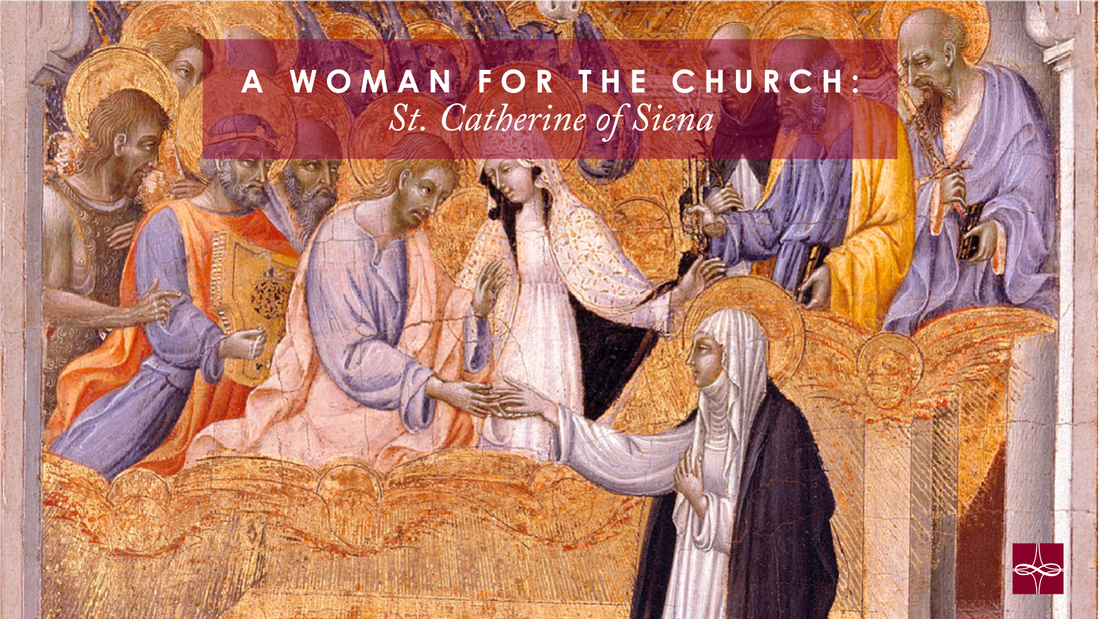

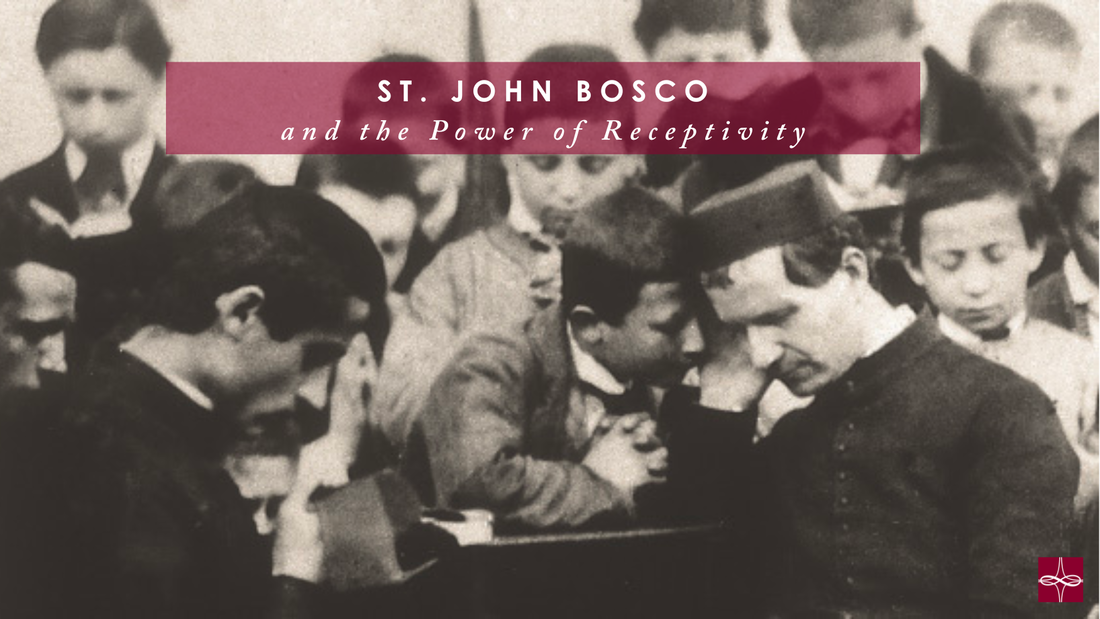



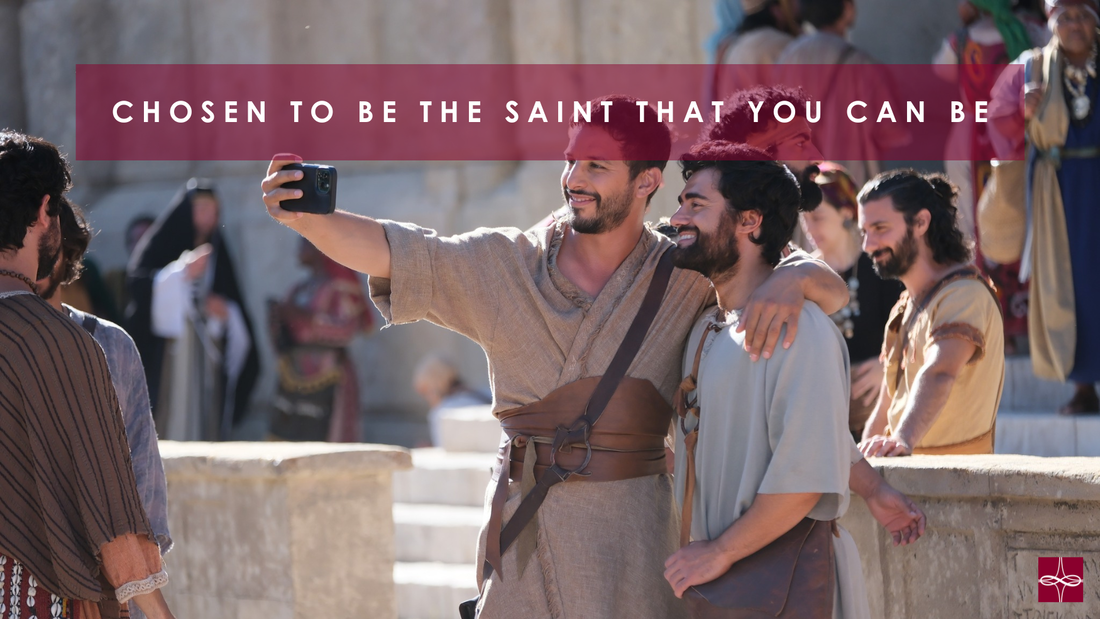
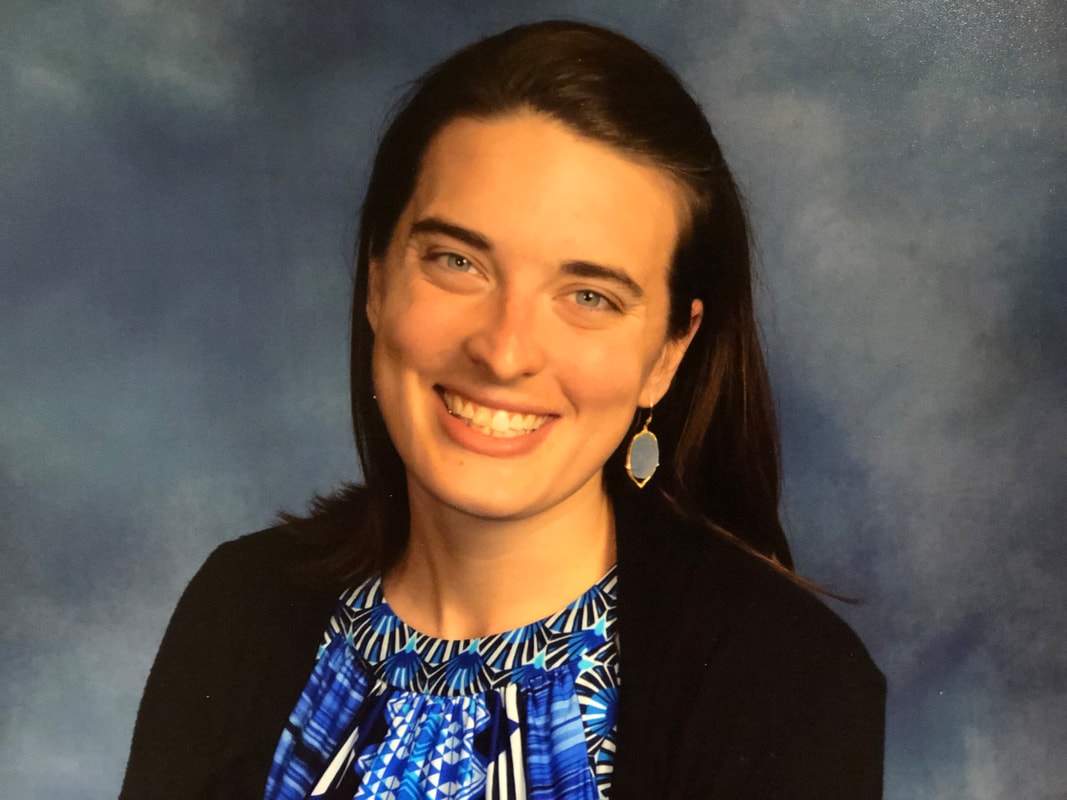
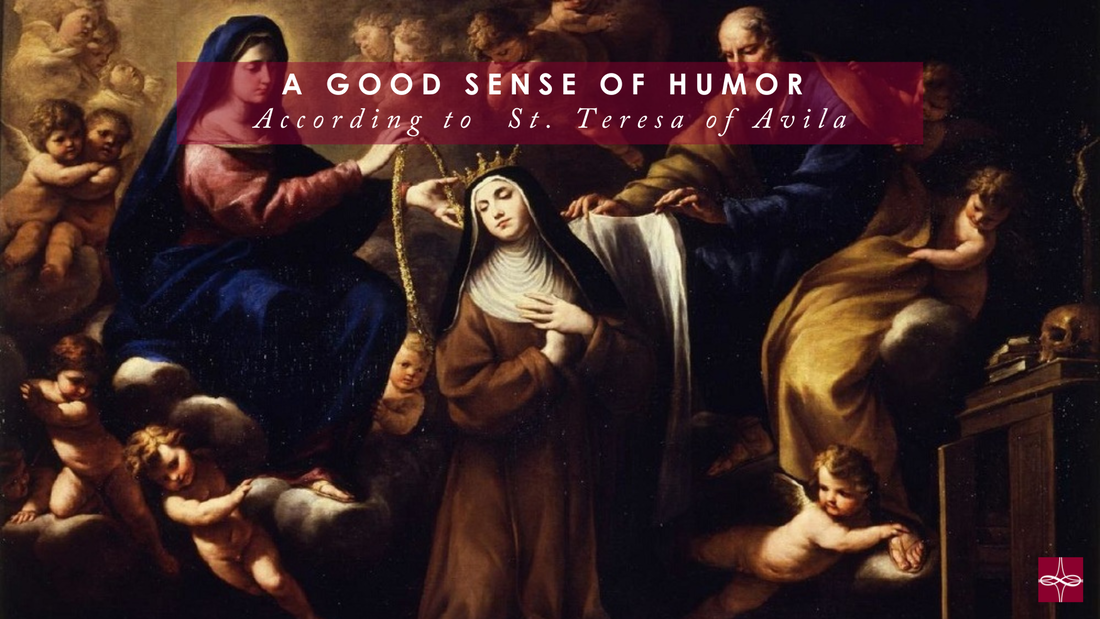



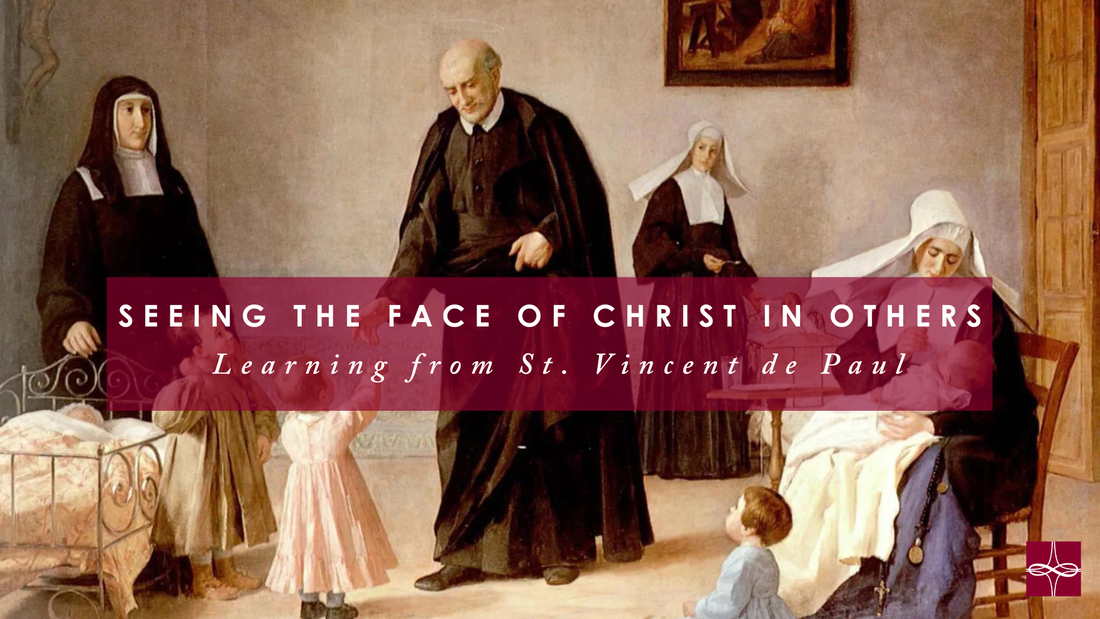

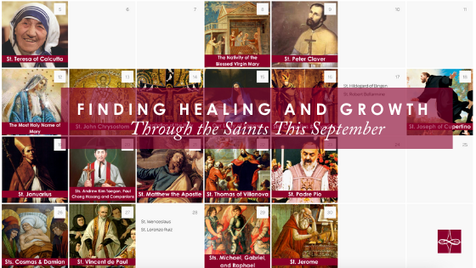

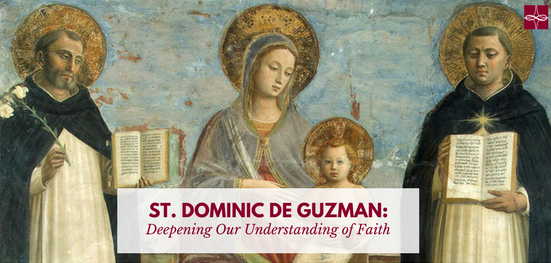

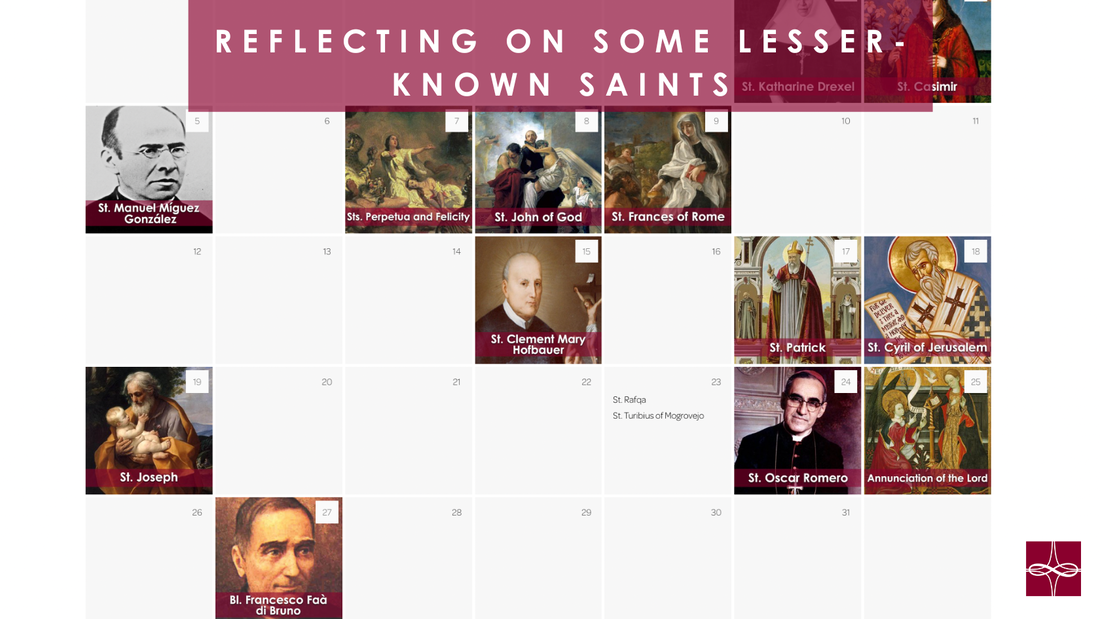

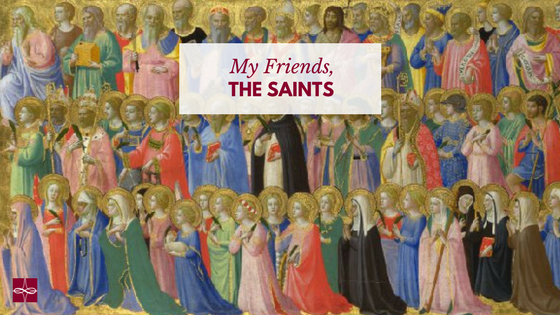


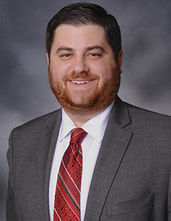
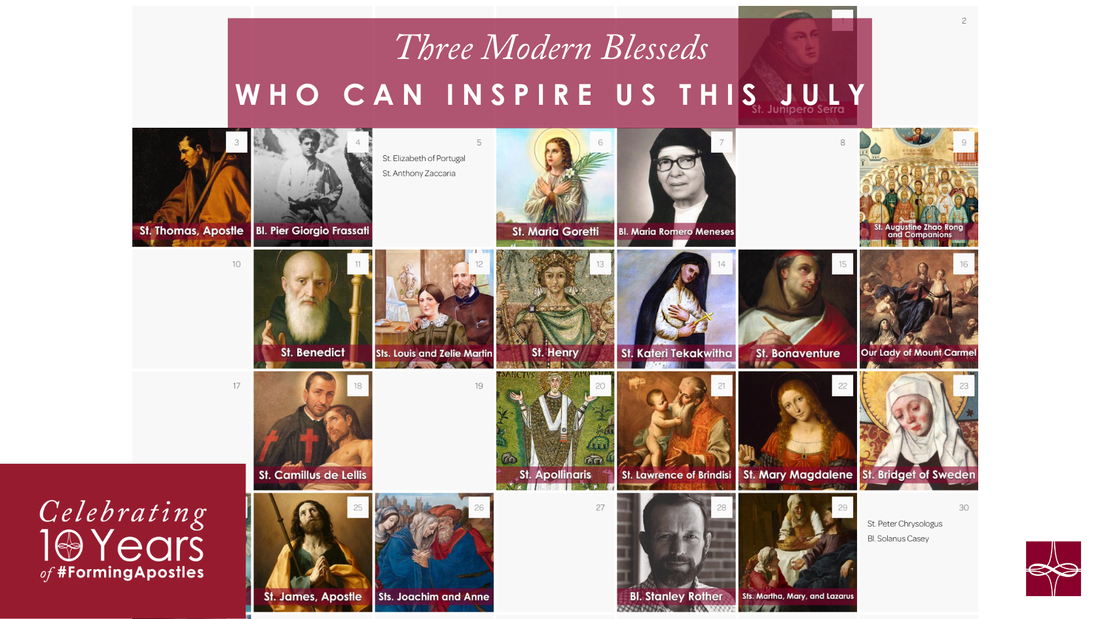
 RSS Feed
RSS Feed